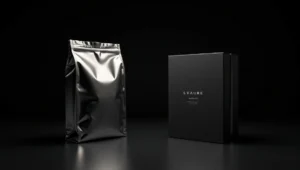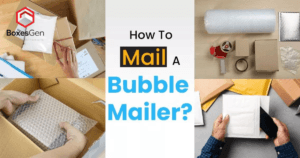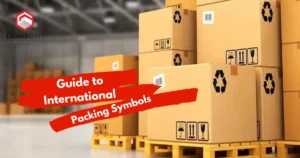Folding Carton Styles
Folding cartons are a universal packaging solution across various industries, prized for their versatility, cost-effectiveness, and eco-friendliness. With a myriad of styles available, each customized to specific needs and products, understanding the different options is essential for businesses seeking optimal packaging solutions. In this article, we will explore various folding carton styles, their features, and applications.
Straight Tuck End (STE)
The Straight Tuck End style is characterized by both the top and bottom closure flaps tucked in the same direction, providing a sleek and seamless appearance. This style offers easy assembly and improves product visibility on retail shelves, making it ideal for consumer goods packaging and Bagged Packaged Goods such as cosmetics, pharmaceuticals, and confectionery items. Its versatility allows for customization in size and design, catering to diverse product dimensions and branding requirements.
Standard Straight Tuck End Carton Dimensions
Inches: 6 x 4 x 2
Centimeters: 15.24 x 10.16 x 5.08
Millimeters: 152.4 x 101.6 x 50.8
Reverse Tuck End (RTE)
In contrast to the Straight Tuck End Cartons, the Reverse Tuck End Carton style features closure flaps that tuck in opposite directions. This design ensures a secure closure while enabling convenient access to the packaged product. RTE cartons are commonly used for packaging items like electronics, food products, and health supplements. The ease of opening and closing makes them popular for products requiring frequent access by consumers.
Standard Reverse Tuck End Carton Dimensions
Inches: 8 x 6 x 3
Centimeters: 20.32 x 15.24 x 7.62
Millimeters: 203.2 x 152.4 x 76.2
Lock Bottom Box
Lock Bottom Boxes are renowned for their sturdy construction and easy assembly. With a pre-glued bottom and locking side panels, these cartons provide excellent structural integrity, making them suitable for heavier items such as canned goods, beverages, and household products. The secure bottom closure minimizes the risk of product damage during transportation and storage, ensuring a reliable packaging solution for manufacturers and retailers alike.
Standard Lock Bottom Box Dimensions
Inches: 10 x 8 x 4
Centimeters: 25.4 x 20.32 x 10.16
Millimeters: 254 x 203.2 x 101.6
Sleeve
Sleeve cartons consist of a tray and a separate sleeve that slides over it, providing a distinctive and visually appealing packaging solution. This style offers ample space for branding and product information, augmenting shelf presence and consumer engagement. Sleeve cartons are commonly used for luxury items, gifts, and premium cosmetics, where presentation is paramount. Their customizable design allows for various embellishments like embossing, foil stamping, and window cutouts, enriching the packaging’s aesthetic appeal.
Standard Sleeve Carton Dimensions
Inches: 4 x 4 x 6
Centimeters: 10.16 x 10.16 x 15.24
Millimeters: 101.6 x 101.6 x 152.4
Foldable Cartons
Foldable cartons, also known as collapsible or flat-pack cartons, are designed to be shipped and stored efficiently in their flattened state, minimizing storage space and transportation costs. Upon assembly, these cartons offer structural integrity and protection for a wide range of products, including electronics, toys, and household goods. Foldable cartons are favored by e-commerce retailers for their cost-effectiveness and eco-friendliness, as they reduce packaging waste and carbon footprint.
Standard Foldable Carton Dimensions
Inches: 12 x 8 x 4
Centimeters: 30.48 x 20.32 x 10.16
Millimeters: 304.8 x 203.2 x 101.6
Paperboard
Paperboard, a lightweight and sustainable packaging material derived from wood pulp, is the primary material used in folding carton manufacturing. It offers excellent printability, structural strength, and barrier properties, making it suitable for various packaging applications. Paperboard can be easily customized in terms of thickness, coatings, and finishes to meet specific packaging requirements. Its recyclability and biodegradability make it a preferred choice for environmentally conscious brands seeking eco-friendly packaging solutions.
Standard Paperboard Carton Dimensions
Inches: 12 x 8 x 6
Centimeters: 30.48 x 20.32 x 15.24
Millimeters: 304.8 x 203.2 x 152.4
Pillow Boxes
Pillow boxes are distinctive for their curved, pillow-like shape, which adds a touch of elegance and sophistication to Custom Product Packaging. These versatile cartons are commonly used for packaging small items such as jewelry, cosmetics, and promotional Gift Packaging. The unique shape allows for efficient space utilization and easy product insertion, improving both visual appeal and practicality. Pillow boxes are available in various sizes and can be customized with decorative embellishments to suit different branding aesthetics.
Standard Pillow Box Dimensions
Inches: 5 x 3 x 1.5
Centimeters: 12.7 x 7.62 x 3.81
Millimeters: 127 x 76.2 x 38.1
Tuck Top Folding Carton
Tuck Top Folding Cartons feature closure flaps that tuck into the top of the carton, providing a secure yet easily accessible packaging solution. This style is ideal for products requiring frequent opening and closing, such as food items, cosmetics, and personal care products. The tuck top closure ensures product freshness and protection while allowing for convenient restocking and display. Tuck top folding cartons can be customized with printing, embossing, and window options to showcase the packaged product effectively.
Standard Tuck Top Folding Carton Dimensions
Inches: 7 x 5 x 3
Centimeters: 17.78 x 12.7 x 7.62
Millimeters: 177.8 x 127 x 76.2
Corrugated Boxes
While folding cartons dominate the market of Retail Packaging, corrugated boxes serve a distinct purpose in shipping and logistics. Constructed from corrugated board, these boxes offer superior strength and cushioning, protecting goods during transit. Corrugated boxes are widely used for shipping perishable goods, fragile items, and bulk products. Their stackability, durability, and cost-effectiveness make them indispensable in supply chain management across various industries.
Standard Corrugated Box Dimensions
Inches: 18 x 18 x 16
Centimeters: 45.72 x 45.72 x 40.64
Millimeters: 457.2 x 457.2 x 406.4
Seal End
Seal End cartons feature a sealed bottom and an open top, providing easy access to the packaged product while ensuring secure closure during storage and transportation. This style is commonly used for packaging items like snacks, frozen food packaging, and pet supplies. The sealed bottom provides additional structural support, preventing product spillage or damage. Seal End cartons can be customized with tear strips, perforations, and tamper-evident features to improve security and convenience for consumers.
Standard Seal End Carton Dimensions
Inches: 9 x 6 x 2
Centimeters: 22.86 x 15.24 x 5.08
Millimeters: 228.6 x 152.4 x 50.8
Aseptic Cartons
Aseptic cartons are specially designed to preserve the freshness and flavor of liquid products without the need for refrigeration, making them ideal for long shelf-life items like milk, juice, and soups. These cartons are made from multiple layers of paperboard, plastic, and aluminum foil, providing a barrier against light, oxygen, and contaminants. Aseptic cartons undergo sterilization processes to ensure product safety and shelf stability, making them a preferred choice for manufacturers and consumers seeking convenience and quality.
Standard Aseptic Carton Dimensions
Inches: 4.5 x 2.5 x 6.75
Centimeters: 11.43 x 6.35 x 17.15
Millimeters: 114.3 x 63.5 x 171.5
Cake Boxes
Cake boxes are designed to safely transport and display cakes, pastries, and baked goods while maintaining their shape and freshness. These cartons feature a sturdy construction with optional inserts and window to showcase the delicacies inside. Cake Boxes are available in various sizes and designs to accommodate different types of confections, from single slices to tiered cakes. Their grease-resistant coatings and secure closures ensure that desserts arrive at their destination intact and visually appealing.
Standard Cake Box Dimensions
Inches: 10 x 10 x 5
Centimeters: 25.4 x 25.4 x 12.7
Millimeters: 254 x 254 x 127
Gable Tops
Gable top cartons, also known as milk or juice cartons, feature a distinctive triangular top with a built-in handle for easy pouring and carrying. These cartons are commonly used for packaging beverages such as milk, juice, and wine. The gable top design provides structural stability and convenience for consumers, making them a popular choice for on-the-go consumption. Gable top cartons can be customized with printing and branding to increase shelf presence and product visibility.
Standard Gable Top Carton Dimensions
Inches: 8.625 x 3.625 x 2.375
Centimeters: 21.91 x 9.21 x 6.03
Millimeters: 219.1 x 92.1 x 60.3
Boxboard
Boxboard, a type of paperboard, is specifically engineered for folding carton manufacturing due to its superior strength, stiffness, and printability. It is composed of multiple layers of recycled paper fibers bonded together with adhesives, offering excellent durability and sustainability. Boxboard is available in various grades and thicknesses to meet diverse packaging requirements, from lightweight food packaging to heavy-duty industrial applications. Its versatility and eco-friendly properties make it a preferred choice for brands committed to Sustainable Packaging Solutions.
Standard Boxboard Carton Dimensions
Inches: 12 x 12 x 12
Centimeters: 30.48 x 30.48 x 30.48
Millimeters: 304.8 x 304.8 x 304.8
Display Boxes
Display boxes, also known as shelf-ready or point-of-sale boxes, are designed to attract consumer attention and maximize product visibility on retail shelves. These cartons feature eye-catching graphics, structural improvements, and product showcases to create a compelling visual display. Display Boxes facilitate easy restocking and replenishment, optimizing shelf space and driving impulse purchases. They are commonly used for promotional campaigns, seasonal merchandise, and new product launches across various retail sectors.
Standard Display Box Dimensions
Inches: 12 x 6 x 4
Centimeters: 30.48 x 15.24 x 10.16
Millimeters: 304.8 x 152.4 x 101.6
Panel Hanger Boxes
Panel hanger boxes incorporate a hanger tab or hole for easy display on retail hooks or pegs, maximizing visibility and accessibility for consumers. These cartons are commonly used for hanging products such as hardware items, toys, and small electronics. The hanger feature ensures that products are prominently displayed at eye level, increasing the likelihood of impulse purchases and brand recognition. Panel hanger boxes can be customized with printing, embossing, and die-cut window to showcase the packaged product effectively while optimizing shelf space and augmenting retail aesthetics.
Standard Panel Hanger Box Dimensions
Inches: 6 x 4 x 2
Centimeters: 15.24 x 10.16 x 5.08
Millimeters: 152.4 x 101.6 x 50.8
Carton
The term “carton” encompasses a wide range of packaging solutions made from paperboard or corrugated board, typically used for consumer goods, food products, and industrial applications. Cartons come in various shapes, sizes, and styles, tailored to specific packaging needs and product requirements. They provide protection, containment, and branding opportunities for packaged goods, serving as a vital component of the product supply chain. Cartons can be customized with printing, coatings, and structural improvements to augment product presentation, durability, and shelf appeal.
Standard Carton Dimensions
Inches: 18 x 18 x 16
Centimeters: 45.72 x 45.72 x 40.64
Millimeters: 457.2 x 457.2 x 406.4
Windowed Cartons
Windowed cartons feature transparent windows made from plastic film or biodegradable materials, allowing consumers to view the packaged product without opening the carton. These cartons are commonly used for products that benefit from visibility, such as food items, cosmetics, and consumer electronics. The windowed design increases product presentation, encourages consumer engagement, and builds trust by showcasing the quality and integrity of the enclosed product. Windowed cartons can be customized with various window shapes, sizes, and placements to suit branding aesthetics and consumer preferences. They offer a balance between product visibility and packaging integrity, making them a popular choice for retail packaging solutions.
Standard Windowed Carton Dimensions
Inches: 8 x 4 x 2
Centimeters: 20.32 x 10.16 x 5.08
Millimeters: 203.2 x 101.6 x 50.8
Conclusion
The world of folding carton styles is vast and diverse, offering a multitude of options to meet the packaging needs of various industries and products. With customization options ranging from size and shape to printing and window features, businesses have the flexibility to create packaging that not only protects and showcases their products but also improves their brand image and engages consumers. By understanding the diverse array of folding carton styles available, manufacturers and retailers can make informed decisions to optimize their packaging solutions for efficiency, sustainability, and consumer appeal in an ever-evolving market landscape.
Frequently Asked Questions
What are the most common folding carton styles?
The most common folding carton styles include Straight Tuck End, Reverse Tuck End, Lock Bottom Box, Sleeve, Foldable Cartons, and Pillow Boxes. Each style offers unique features and benefits tailored to specific packaging needs and product requirements.
How do I choose the right folding carton style?
Consider factors such as product type, size, weight, branding requirements, and consumer preferences. Evaluate the structural integrity, aesthetic appeal, and functionality of each style to determine which best suits your packaging objectives and budget.
Are folding cartons eco-friendly?
Yes, many folding cartons are eco-friendly, as they are typically made from recyclable and biodegradable materials such as paperboard. Choosing sustainable packaging options can help reduce environmental impact and meet consumer demand for eco-conscious products.
What industries commonly use folding cartons?
Folding cartons are widely used across various industries, including cosmetics, pharmaceuticals, food and beverage, electronics, toys, and personal care products. Their versatility, customization options, and cost-effectiveness make them a popular packaging choice for diverse products.
Can folding cartons be customized?
Yes, folding cartons can be customized in terms of size, shape, printing, coatings, and structural improvements to meet specific branding and packaging requirements. Customization options allow businesses to create unique packaging solutions that reflect their brand identity and engage consumers effectively.
What is the difference between paperboard and corrugated board?
Paperboard is a single layer of thick paper, typically used for folding cartons, while corrugated board consists of multiple layers of paperboard with a fluted layer in between, providing added strength and cushioning. Corrugated board is primarily used for shipping and packaging heavier items.
How can windowed cartons benefit my products?
Windowed cartons offer product visibility, allowing consumers to see the packaged product without opening the carton. This improves product presentation, builds consumer trust, and encourages purchase decisions by showcasing the quality and features of the enclosed item.
Are folding cartons suitable for shipping?
While folding cartons are primarily designed for retail packaging, certain styles such as Lock Bottom Boxes and Seal End cartons offer sufficient structural integrity for shipping. For heavier items or long-distance shipping, Corrugated Boxes are generally recommended for added durability and protection.
What is the shelf life of aseptic cartons?
Aseptic cartons are designed to preserve the freshness and quality of liquid products without refrigeration for an extended period, typically ranging from several months to over a year, depending on the product and sterilization process used during manufacturing.
Can I use folding cartons for food packaging?
Yes, folding cartons are commonly used for Food Packaging, offering protection, containment, and branding opportunities for various food products. Ensure that the chosen cartons meet food safety regulations and consider factors such as moisture resistance and barrier properties for perishable items.
What are the advantages of panel hanger boxes?
Panel hanger boxes provide easy display on retail hooks or pegs, maximizing visibility and accessibility for consumers. They improve product presentation, optimize shelf space, and encourage impulse purchases by prominently showcasing products at eye level in retail environments.
Are pillow boxes suitable for delicate items?
Yes, pillow boxes are suitable for delicate items such as jewelry, cosmetics, and small gifts. Their curved shape and sturdy construction provide protection and cushioning, preventing damage during storage and transportation while adding a touch of elegance to the packaging presentation.
How do foldable cartons reduce packaging waste?
Foldable cartons can be shipped and stored efficiently in a flattened state, minimizing storage space and transportation costs. By reducing material usage and optimizing packaging efficiency, foldable cartons help minimize packaging waste and environmental impact throughout the supply chain.
Can I recycle folding cartons?
Yes, most folding cartons are made from recyclable materials such as paperboard, making them suitable for recycling programs. Ensure that cartons are clean and free from contaminants before recycling to maximize their recyclability and environmental benefits.
What role do display boxes play in retail?
Display boxes play a crucial role in retail by attracting consumer attention, maximizing product visibility, and driving sales. They create visually appealing product displays, facilitate easy restocking and replenishment, and differentiate brands in competitive retail environments, ultimately improving the shopping experience for consumers








